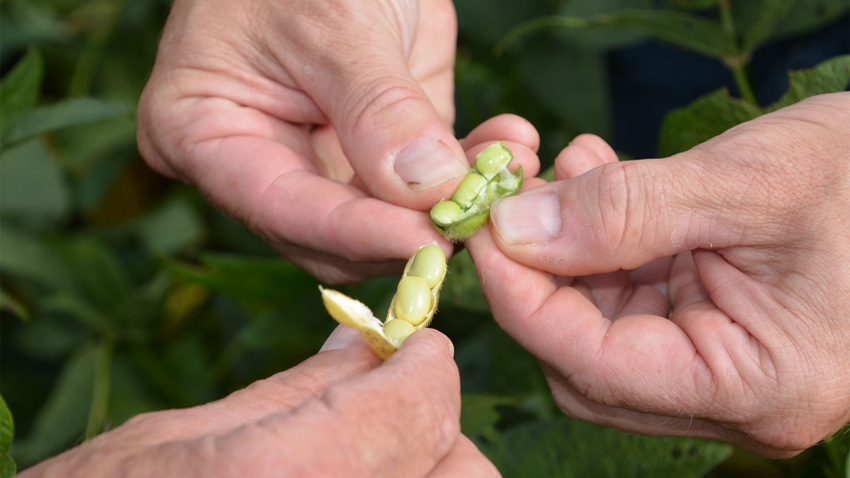
The Purdue Corn and Soybean Field Guide states that at full maturity, known as the R8 stage, 95% of soybean pods have reached that variety’s mature pod color. But until then, it’s still “game on” as far as soybean plants still trying to pack the last bit of yield into beans.
“We’ve discovered that soybeans are still adding weight to individual beans inside of pods even if plants are turning yellow,” says Steve Gauck, a regional agronomy manager for Beck’s, sponsor of Soybean Watch ’23. “Many people have traditionally thought that once soybeans start turning yellow, the season is over, but that’s not really true. In fact, there is evidence suggesting that soybean plants can be 50% yellow or more but still adding weight and size to individual beans within pods.”
Why is that important to know? “If you get rain at that stage after it’s been dry, soybeans may be able to use the moisture to top off yield,” Gauck says. “If you irrigate, it’s even more important. If it’s dry late in the season, this information means you don’t want to stop irrigating and applying moisture for the crop until soybean plants are at least 50% yellow.
“Work by several agronomists recently has shown that curtailing irrigation too early can cost you up to 10 bushels per acre, depending upon how early you pull the plug on irrigating. There is still a lot more going on inside soybean plants very late in the season, compared to how we used to assume if leaves were yellowing and some were falling, the season was over for those plants.”
Other clues
If you’re interested in pinpointing when soybeans no longer benefit from either rain or irrigation water, Gauck suggests analyzing pods more closely. Open a few and look inside.
“If beans are large and no longer have a membrane attached to them, they’re probably done taking in materials from the plant’s vascular system,” Gauck says. “It probably would not make sense to irrigate after that point, if plants and pods were consistently at that stage.
“However, if there is still a whitish, membrane-like material attached to each seed in the pod, there is likely still time to add yield. If you find many pods with green soybeans attached through membranes, then bring on the irrigation.”
Whether or not the bean itself has separated from the membrane in the pod is a good clue to plant progress toward maturity. However, if you’re irrigating, you also need a good handle on soil moisture levels, Gauck says. That’s where a soil moisture probe installed in the field can play a big role.
Ceres Solutions installed a CropX moisture sensor in the Soybean Watch ’23 field very early in the season after planting. It provides instant readouts on moisture levels down to 4 feet.
Through an app, the moisture sensor displays levels throughout the season to the agronomist’s computer. If it indicates that plants need moisture, you’re not at 50% yellow, and soybeans inside pods are still connected by membranes, it’s likely irrigation would pay, Gauck concludes.
About the Author(s)
You May Also Like




